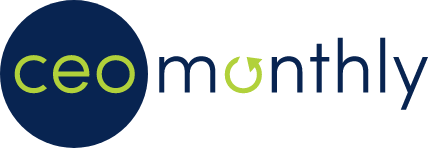
As technology evolves, the mining industry faces the challenge of upskilling its workforce to ensure safety and efficiency.
The digital skills gap continues to grow so it is important that businesses within the mining industry not only recruit to fill the skills shortage but also actively invest in continuous digital training to ensure the right digital skills are being brought to the sector.
Upskilling your workforce is vital for the success and safety of your business. Effectively training your staff in digitalisation can give them the confidence they need to fulfil their competencies. With 22% of mines not actively training employees on digitalisation, the difficulties of the skills shortage are heightened.
David Marshall, Integra™ Marketing Manager at Welding Alloys, a leading expert in cladding and hardfacing applications, says: “The skills shortage is disruptive to many industries, including the mining sector. The digital skills gap is proving especially prevalent due to the disruption of industry productivity.
“With a skills shortage spanning all job roles, a new workforce might not always have the needed digital skills to perform. Ensuring you’ve got the right training in place for the use of technology in mining is vital for the success of your business and the safety of your employees.”
The role of technology in the mining industry:
AI
Artificial intelligence, automation, and augmented reality are all forms of technology and machine learning that are coming to the forefront of the mining industry. One use for AI in the mining industry is predictive maintenance, using big data alongside risk assessment algorithms to ensure the safety of your employees.
Not only can you use drones and sensors to provide greater safety measures, but you can also use this information and the scope of your projects to better understand the risks which can occur. Welding Alloys, for example, has previously seen Hardplate™ wear liners installed with wear sensors by KW Chile. These wear sensors meant the company could monitor the wear rate on a chute conveyor belt used in a large underground mine in South America without requiring physical intervention.
By integrating AI-driven predictive maintenance, companies can foresee potential breakdowns before they occur, reducing downtime and waste. This proactive approach lowers costs and aligns with sustainability goals by optimising resource usage.
By integrating AI-driven predictive maintenance, companies can foresee potential breakdowns before they occur, reducing downtime and waste. This proactive approach lowers costs and aligns with sustainability goals by optimising resource usage.
However, if you don’t have the right engineers in your business who can work with AI to achieve this outcome, you won’t be able to best use it in your practices. This means you will have to rely on different, and perhaps outdated, safety measures. Having someone with the right digital knowledge to implement AI into these practices can improve the safety and security of your workers, projects, and the overall business.
Cybersecurity
Technological advancements now mean that businesses across all industries are experiencing stronger cybersecurity than before. According to data, by 2025, asset cyber security is projected to have a 75% adoption rate in mining technology globally.
However, the digital skills gap could be causing security issues as human error comes into play. Not only can the lack of understanding around these technologies cause problems for access, but it can also make initiative security measures ineffective – putting your assets and information at risk.
David Marshall says: “Developing the digital skills of your workforce also includes their cybersecurity awareness. Through courses and upskilling, you’ll be in a better position to ensure that these asset protection technologies are being used at their best.”
Connected worker
Another form of technology which is planned to grow is connected worker technology. In fact, by 2025, this type of technology should have a 50% adoption rate. This includes wearable devices such as smart glasses or helmets to ensure the safety of your employees to industry-wide use of the ‘Internet of Things’ to maintain stronger data for analysis. This allows you to track your mining engineers’ performance and safety.
Modern smart helmets, for instance, are equipped with sensors to monitor worker safety and well-being in real time. This can alert workers to potential dangers when operating in hazardous conditions. These technologies also provide field engineers with data, schematics, maps and charts, leading to more efficient equipment inspections and repairs.
Data shows that connected worker technology has saved 471 lives – with the number expected to grow by 2025. However, these technologies are only useful when implemented properly.
Ensuring that your staff are wearing their devices correctly is paramount to their safety, avoiding additional items getting caught in machinery, and providing the right tracking measures your business needs to encourage positive safety changes.
How to bridge the digital skills gap
According to data, 49% of top executives in the mining industry say automation and digitalisation are part of their long-term goals. However, achieving them will take some change.
73% of mining companies acknowledge that digital skills gaps are a main issue in implementing technology into their processes—but there are ways to improve digital skills gaps.
Partner with tech providers
Partnering with tech and educational institutions could be a great way to offer targeted training programmes for your people. From data analysis to AI and automation, there are plenty of opportunities for workers to learn the ins and outs of tech tools and apply them to their day-to-day tasks.
Peer learning and mentorship
Mentorship programmes are an effective way of connecting experienced staff members with a new workforce. This way, you can ensure that the best knowledge within your business is being shared among new employees. This can also be a great opportunity for new employees to gain confidence in their roles.
The digital skills gap isn’t solely caused by new technologies and a lack of understanding. If your company uses legacy systems or older versions of technology that new employees haven’t worked with yet, you will need to invest some time in training your new staff in this technology and how it works for your business.
Every business uses its technology differently, so having an established team member contributing to the onboarding can help eliminate confidence and technical issues from the beginning.
Recruitment
Recruitment is another way of filling your skills gap. If your business is struggling with the digital side of things, you must be hiring people not only with experience in the mining industry but, importantly, with the right technical skills.
By broadening your hiring criteria, you will be better able to find candidates that fit your digital needs. Opening your recruitment policies in this way, you might hire a candidate with the necessary digital skills who can adapt to the mining industry by guiding your established workforce through new processes and technologies.
The digital skills gap is impacting all industries but can be felt particularly acutely within the mining industry. Finding recruits and supporting established workforces with these enhancements is a must for the safety of your private data and information and your employees.




























